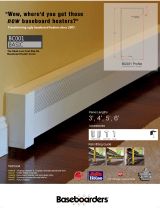
Introduction
Overview..............................................................................................................................................................................................4
Warranty.............................................................................................................................................................................................. 4
General instructions........................................................................................................................................................................ 4
Safety Precautions............................................................................................................................................................................5
Symbols used in Danfoss literature............................................................................................................................................6
Design...................................................................................................................................................................................................6
Direct displacement drive system..............................................................................................................................................8
LPV Pump schematic diagram.....................................................................................................................................................8
Operation
HPRV (High pressure relief valve)............................................................................................................................................... 9
Bypass function.................................................................................................................................................................................9
CPRV (Charge pressure relief valve)........................................................................................................................................ 10
Loop flushing valve.......................................................................................................................................................................10
Neutral return mechanism..........................................................................................................................................................11
Technical specifications
Specifications...................................................................................................................................................................................12
Fluid and filter recommendations
Fluid and filter recommendations........................................................................................................................................... 15
Startup procedures
General ..............................................................................................................................................................................................16
Start-up procedure........................................................................................................................................................................16
Pressure measurements
Required tools.................................................................................................................................................................................17
Port locations and gauge installation.....................................................................................................................................17
Troubleshooting
Overview........................................................................................................................................................................................... 18
System operating hot...................................................................................................................................................................18
Transmission operates normally in one direction only....................................................................................................18
System will not operate in either direction.......................................................................................................................... 18
System noise or vibration........................................................................................................................................................... 19
Sluggish system response...........................................................................................................................................................19
Adjustments
Pump adjustment..........................................................................................................................................................................20
Standard procedures, inspections, and adjustments....................................................................................................... 20
Charge pressure relief valve adjustments.............................................................................................................................20
System check and HPRV.............................................................................................................................................................. 22
Checking for proper HPRV valve operation.................................................................................................................... 22
Loop flushing valve.......................................................................................................................................................................22
Neutral return mechanism..........................................................................................................................................................23
Leveling swashplate with pump installed on machine....................................................................................................24
Minor repair
Input shaft and seal.......................................................................................................................................................................25
Trunion seal......................................................................................................................................................................................29
High Pressure Relief Valves.........................................................................................................................................................30
Charge pressure relief valve.......................................................................................................................................................31
Loop flushing valve.......................................................................................................................................................................32
Bypass valve.....................................................................................................................................................................................33
Coupling............................................................................................................................................................................................34
Torque chart
Fasteners and plugs......................................................................................................................................................................35
Fastener size and torque chart..................................................................................................................................................35
Plug size and torque chart..........................................................................................................................................................35
Service Manual
LPV Closed Circuit Axial Piston Pumps
Contents
11004904 • Rev 0100 • July 2015 3






















